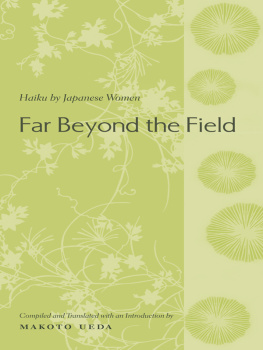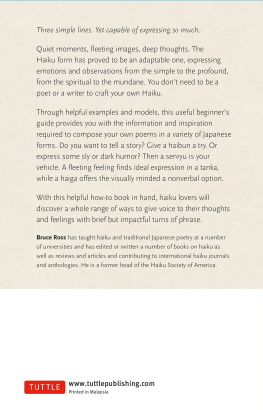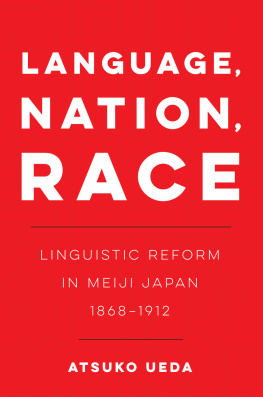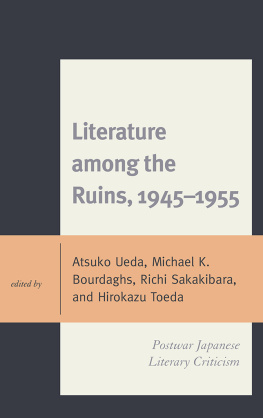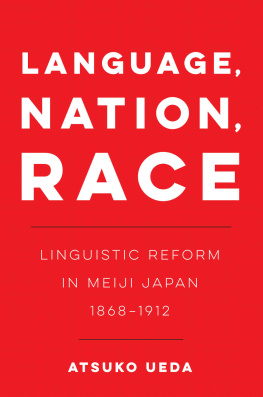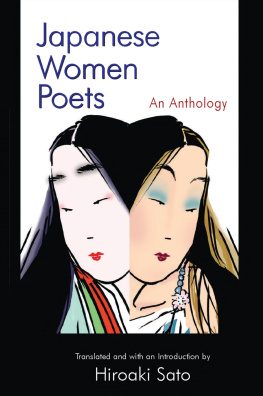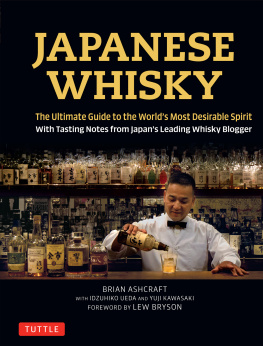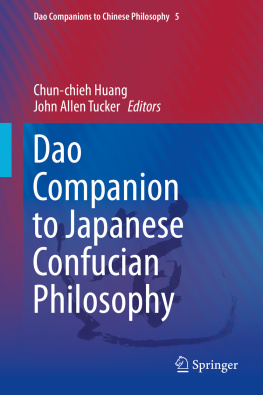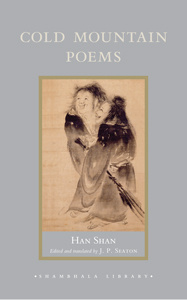Ueda - Far beyond the field: haiku by Japanese women
Here you can read online Ueda - Far beyond the field: haiku by Japanese women full text of the book (entire story) in english for free. Download pdf and epub, get meaning, cover and reviews about this ebook. City: United States, year: 2012;2003, publisher: Columbia University Press, genre: Non-fiction. Description of the work, (preface) as well as reviews are available. Best literature library LitArk.com created for fans of good reading and offers a wide selection of genres:
Romance novel
Science fiction
Adventure
Detective
Science
History
Home and family
Prose
Art
Politics
Computer
Non-fiction
Religion
Business
Children
Humor
Choose a favorite category and find really read worthwhile books. Enjoy immersion in the world of imagination, feel the emotions of the characters or learn something new for yourself, make an fascinating discovery.
- Book:Far beyond the field: haiku by Japanese women
- Author:
- Publisher:Columbia University Press
- Genre:
- Year:2012;2003
- City:United States
- Rating:3 / 5
- Favourites:Add to favourites
- Your mark:
- 60
- 1
- 2
- 3
- 4
- 5
Far beyond the field: haiku by Japanese women: summary, description and annotation
We offer to read an annotation, description, summary or preface (depends on what the author of the book "Far beyond the field: haiku by Japanese women" wrote himself). If you haven't found the necessary information about the book — write in the comments, we will try to find it.
Ueda: author's other books
Who wrote Far beyond the field: haiku by Japanese women? Find out the surname, the name of the author of the book and a list of all author's works by series.
Far beyond the field: haiku by Japanese women — read online for free the complete book (whole text) full work
Below is the text of the book, divided by pages. System saving the place of the last page read, allows you to conveniently read the book "Far beyond the field: haiku by Japanese women" online for free, without having to search again every time where you left off. Put a bookmark, and you can go to the page where you finished reading at any time.
Font size:
Interval:
Bookmark:
Far
Beyond
the Field
Translations from the Asian Classics
Translations from the Asian Classics
Editorial Board
Wm. Theodore de Bary, Chair
Paul Anderer
Irene Bloom
Donald Keene
George A. Saliba
Haruo Shirane
David D. W. Wang
Burton Watson
Far
Beyond
the Field
Haiku by Japanese Women
An Anthology
Compiled, Translated, and with an Introduction by
MAKOTO UEDA
Columbia
University
Press
New York

Columbia University Press
Publishers Since 1893
New York Chichester, West Sussex
cup.columbia.edu
2003 Columbia University Press
All rights reserved
E-ISBN 978-0-231-50279-5
Library of Congress Cataloging-in-Publication Data
Far beyond the field : haiku by Japanese women : an anthology / compiled, translated, and with an introduction by Makoto Ueda.
p. cm.(Translations from the Asian classics)
Includes bibliographical references.
ISBN 0231128622 (cloth : alk. paper)ISBN 0231128630 (paper : alk. paper)
1. HaikuTranslations into English. 2. Japanese poetryWomen authorsTranslations into English. I. Title: Haiku by Japanese women. II. Ueda, Makoto, 1931 III. Series.
PL 782.E3 F37 2003
895.61041089287dc21
2002034832
A Columbia University Press E-book.
CUP would be pleased to hear about your reading experience with this e-book at .
This is a collection of four hundred haiku written by twenty Japanese women poets over a period of three and one-half centuries. I have selected poets from different eras in the history of haiku so that the reader may get an overview of the way in which this seventeen-syllable form succeeded in establishing itself from the earliest times to the present. The finest work done by a female haiku poet exemplifies her era just as well as that of a male poet, even though her status in her times haiku circles may not have been very high. Compared with haiku written by men, the world of womens haiku is just as rich and colorful, and slightly more lyrical and erotic. Because haiku traditionally tended to shun strong passion and romantic love, to explore those areas was to go counter to established tradition, yet some women poets consciously or subconsciously did so, thereby helping to expand the world of haiku.
It was difficult to select women poets for this anthology: there were too few of them in premodern times, and there are too many today. Before the twentieth century, haiku was mostly considered a male preserve; women were expected to write tanka, a more elegant and lyrical literary genre. Few collections of haiku by premodern female poets are readily available today, not only because such poets were few in number but because most haiku scholars and anthologists in todays Japan are male. On the other hand, it has been estimated that women constitute some 70 percent of the haiku-writing population in Japan at the present time. Hototogisu (The mountain cuckoo), the most prestigious and longest-lasting haiku magazine, has a woman for its chief editor. I could have easily compiled an anthology of haiku written by twenty, thirty, or forty contemporary women poets. However, I felt it more important to show the entire tradition of womens haiku in Japan, for that tradition has been long, rich, and largely unknown to the Western world. I also wanted to give some sense of each poets individual style, and to do so in fewer than twenty poems seemed very difficult indeed.
As is obvious by now, I am using the term haiku to denote all serious poems written in the seventeen-syllable form since the sixteenth century. Such poems were called hokku before the twentieth century, but since this anthology covers both modern and premodern times I wanted to avoid the confusion of mutiple names. Similarly, the term tanka includes all poems composed with the 5-7-5-7-7 syllable pattern, regardless of the period they come from. Haikai, as used in this book, designates all literary products written in the spirit of haiku, including haiku, renku (linked verse), and haibun (haiku prose). All Japanese names appear in the Japanese order, the surname preceding the given name or haig (haiku name), except when the poets are authors of books in English. I have also followed the Japanese custom of calling the poet by her haig or by her given name when the full name is not used. Prior to 1873 the Japanese used the lunar calendar, but again for the sake of uniformity I have converted all dates into their Gregorian equivalents.
The poets are presented in chronological order. I have tried to do the same for the poems; however, because of the lack of biographical material, it was difficult to do so for the work of the premodern poets. In their case the arrangement is largely based on my guesswork, with no hard evidence. It is hoped that as studies on those poets progress, their poems will be dated with more scholarly authority. Kinuko Jambor, in her recent book on Shiba Sonome, has already shown the way. Haiku by modern poets are less difficult to date, but because many of them were published in collections without exact dates, I have often had to make an educated guess, and I am certain I have erred from time to time. The poems appear in the original Japanese in the lower margin of each page. The citation in the following parentheses refers to the place where the original haiku can be found (see the Selected Bibliography for details).
Eleven of the authors hold copyrights, and I am happy to say they kindly granted me permission to translate and publish their poems here. My thanks are due to Hashimoto Miyoko (for Hashimoto Takako), Mitsuhashi Yichi (for Mitsuhashi Takajo), Katsura Nobuko, Yoshino Yoshiko, Tsuda Kiyoko, Inahata Teiko, Uda Kiyoko, Kuroda Momoko, Tsuji Momoko, Katayama Yumiko, and Mayuzumi Madoka. I am also grateful to the Hoover Institution Library at Stanford University, the library at the Harvard-Yenching Institute, and the University of Michigan East Asiatic Library for the materials I have used. Mr. E. M. W. Edwards carefully read the entire manuscript and gave me numerous suggestions for improving it; while I was unable to follow all of them, I know the book gained a great deal from his help. Two anonymous readers for Columbia University Press provided me with a series of recommendations that only experts in the field could offer; accordingly, I have tried to remedy any inadequacies. Nevertheless, all the errors and infelicities that may be found in the book are mine.
R. H. Blyth, although he contributed more than anyone to an international understanding of haiku, once wrote that he doubted whether women could write in the seventeen-syllable form: Haiku poetesses, he said, are only fifth class. Certainly the attribution is wrong, for Bash, the most prestigious of the haiku masters, not only associated with female poets but took several of them under his wing. He even had their verses published in the anthologies of his haiku group. Still, that the precept was widely believed to be his is itself clear evidence of a prevailing sexual prejudice in haiku circles of the seventeenth and eighteenth centuries.
The prejudice lingered well into the twentieth century. For instance, when a certain young woman once visited the eminent haiku poet Kat Shson (19051993) and asked if she could be allowed to join his haiku group, he replied: Instead of writing haiku or doing anything else, a young lady like you should try to get happily married. Find a husband, struggle with pots and pans in the kitchen, have children. Giving birth to haiku after going through all thatwhy, those would be true haiku. To be fair to Shson, he was one of the so-called humanist haiku poets who emphasized the importance of spiritual and moral discipline for anyone interested in writing poetry. Also, his comment does not completely shut the door on women who want to write haiku; as a matter of fact, his wife Chiyoko was a haiku poet. Yet it is undeniable that beneath the comment lay the traditional patriarchal attitude: a woman should first be a good wife and mother, and writing haiku or doing anything else should be subordinate to the performance of that role.
Next pageFont size:
Interval:
Bookmark:
Similar books «Far beyond the field: haiku by Japanese women»
Look at similar books to Far beyond the field: haiku by Japanese women. We have selected literature similar in name and meaning in the hope of providing readers with more options to find new, interesting, not yet read works.
Discussion, reviews of the book Far beyond the field: haiku by Japanese women and just readers' own opinions. Leave your comments, write what you think about the work, its meaning or the main characters. Specify what exactly you liked and what you didn't like, and why you think so.

